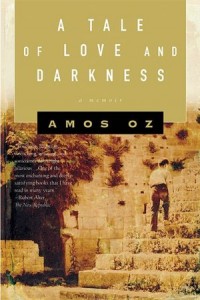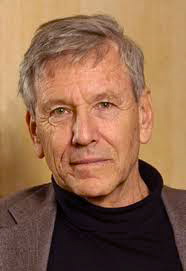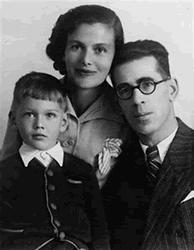“For [my parents] it was not enough for me to be intelligent, rational, good, sensitive, creative, and thoughtful with the dreamy vision of an artist. In addition, I also had to be a seer and a fortune-teller, a kind of family oracle. After all, everyone knew that children were closer to nature, to the magical bosom of creation, not having been corrupted yet by lies or poisoned by selfish considerations.”
 The child of Ashkenazi Jews who escaped to Jerusalem just before the outbreak of World War II, Amos Klausner (the author’s original name) grew up in a scholarly family which encouraged his precocity. His great uncle Joseph was Chair of Jewish History at Hebrew University of Jerusalem and wrote his magnum opus about Jesus of Nazareth. His father read sixteen or seventeen languages, wrote poetry, and had an enormous library, while his mother spoke four or five languages, could read seven or eight, and told elaborate stories.
The child of Ashkenazi Jews who escaped to Jerusalem just before the outbreak of World War II, Amos Klausner (the author’s original name) grew up in a scholarly family which encouraged his precocity. His great uncle Joseph was Chair of Jewish History at Hebrew University of Jerusalem and wrote his magnum opus about Jesus of Nazareth. His father read sixteen or seventeen languages, wrote poetry, and had an enormous library, while his mother spoke four or five languages, could read seven or eight, and told elaborate stories.
Amos grew up a solitary child, encouraged to entertain himself while his parents worked. Always a writer at heart, he believed that “it was not enough for me to be intelligent, rational, good, sensitive, creative…. I was a one-child show…a non-stop performance,” always on display to the relatives, his accomplishments never seeming to be enough. He had an additional problem, which reached to the heart of who he was: “I was a word-child,” he says, “but I had no one to listen to me.”

In this elaborate, non-linear autobiography, Oz and his family are seen as archetypal immigrants to Jerusalem, people who arrived when the land was still under British rule and who helped create a new homeland, arguing ferociously about the direction the country should take and the leaders who should lead it. The history of Jerusalem combines with the author’s own genealogical records and his memories about his early family life to create a broad picture of the society in which he grew up and in which his writing talent took root.
Detailed, highly descriptive, and filled with introspection about his unusual life, the book shows the tensions within the society and within his family. After his mother’s suicide when he was twelve, he broke with his father, joined a kibbutz, and changed his name at fifteen. His observations about himself in relation to his peers and in relation to the outside world, even at that young age, show his inner turmoil and determination to discover a personal identity.
 As the book moves back and forth in time, the author comments about his writing, the people who influenced him, and his “pickpocketing,” his “stealing” of the lives of real people in order to invent stories about them. His observations about Israel, its leaders, its never-ending wars with the Arabs, and his experience as a resident of a kibbutz for more than thirty years broaden the scope and provide insight into one man’s life in this developing country. Obviously a huge achievement for Oz personally, this is also a huge contribution to the understanding of the growth of a Jewish homeland and to an understanding of how Oz became the writer he is. Much more detailed and leisurely than Oz’s novels, this is slow but satisfying reading for those who admire his novels.
As the book moves back and forth in time, the author comments about his writing, the people who influenced him, and his “pickpocketing,” his “stealing” of the lives of real people in order to invent stories about them. His observations about Israel, its leaders, its never-ending wars with the Arabs, and his experience as a resident of a kibbutz for more than thirty years broaden the scope and provide insight into one man’s life in this developing country. Obviously a huge achievement for Oz personally, this is also a huge contribution to the understanding of the growth of a Jewish homeland and to an understanding of how Oz became the writer he is. Much more detailed and leisurely than Oz’s novels, this is slow but satisfying reading for those who admire his novels.
Photos, in order:
 The author’s photo by Colin McPherson/Corbis appears on www.debezigebij.nl
The author’s photo by Colin McPherson/Corbis appears on www.debezigebij.nl
The author with his parents, Fania and Yehuda Arye Klausner, is from a family website, which also has a photo of the author’s great-uncle Joseph, who plays a significant part in the author’s story: http://www.eilatgordinlevitan.com
The Hulda kibbutz, in which Oz lived as a child and for many years as an adult, is now the site of the Barkan winery, the country’s largest, moved there in 2004 when the company left its earlier site in Barkan on the West Bank. http://www.inminds.com
ALSO by Amos Oz: MY MICHAEL, PANTHER IN THE BASEMENT, SOUMCHI, THE RHYMING LIFE AND DEATH, SCENES FROM VILLAGE LIFE JUDAS
